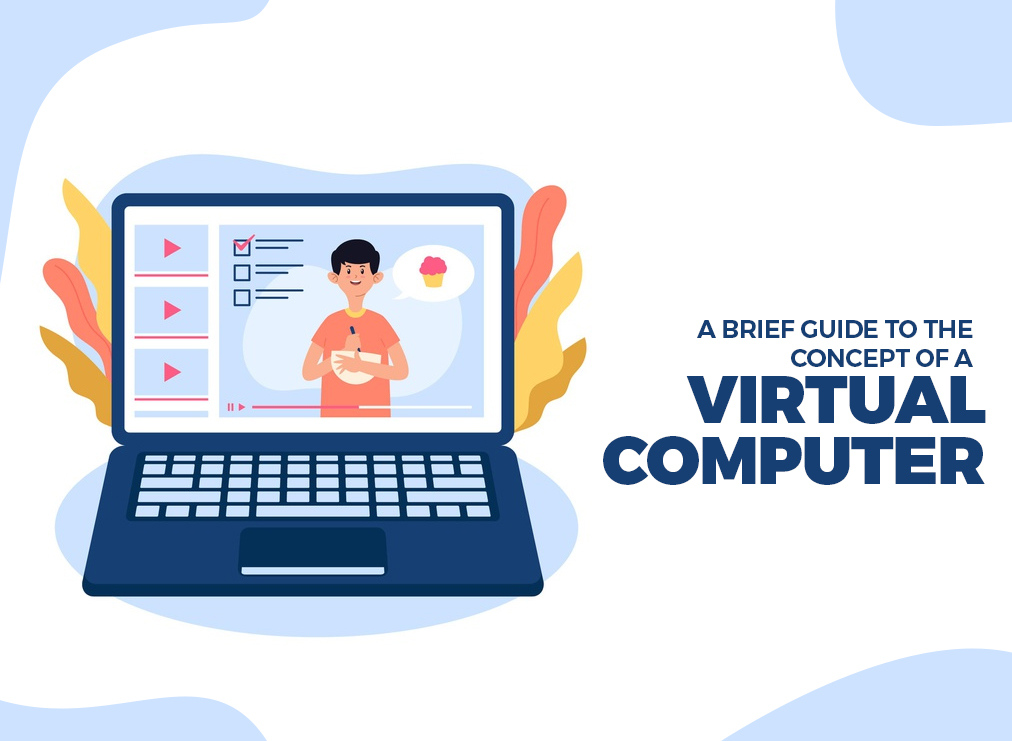Computers are one of the most important types of machines today. They are used in many different industries, from construction sectors to finance. In fact, you are likely to find at least one type of computer in every home.
These machines come in the form of laptops and desktops, or smartphones and tablets. However, there is a less known type of computer called virtual computers or virtual machines (VMs). These are used in physical and cloud environments for various case applications.
If you are not familiar with the concept of a virtual computer, then this guide will help you understand what it is and how it is used in various industries. Here’s what you need to know about it.

What Is a Virtual Computer?
The most important thing to know about such machines is that they function as a computer within a computer. Say, you have a computer system with its own hardware and software.
You can use this existing system to install a virtual environment that acts as a separate computer system. Basically, you can have more than one computer system in one set of hardware.
To install a new system (guest) into an existing one (host), you need to use a hypervisor or a software that allows you to install virtual environments by separating and allocating resources for the use of the guest.
Once Virtual Machine is placed inside the host, you can simply launch it and it will open into a window, which allows you to use the virtual environment.
Uses of a Virtual Computer
Now that you know what VMs are, you might be wondering how they are applied in various industries. These are the most common uses of a guest.
Utilizing More than One OS
These are three of the most known operating systems, namely Windows, MacOS, and Linux. Out of the box, computers come with only one OS, but what if you want to use another one? Say, you have an HP laptop with Windows and you want to have a MacOS, as well?
VMs are your best bet when it comes to using more than one OS. You can use a combination of different operating systems. If your resources allow or if your work requires, you can run all of them in one host.
Testing Operating Systems and Programs
The ability to install more than one OS comes in handy when you want to try out other operating systems or updates without installing them directly to the host. You can simply install the target OS as a guest and explore what it has to offer or if it is stable enough.
This can help you avoid losing your data and existing programs due to a lack of stability of the new OS or OS update.
The same is true if you want to test programs. Placing them in the guest instead of on the host can save you trouble, especially if you are questioning the stability or security of the program.
Efficiency and Cost Reduction
Another important reason why industries, especially the tech sector, use VMs is that it helps them become more efficient and reduce costs.
Because multiple VMs can exist in a single set of hardware, you can maximize the use of your hardware more efficiently without compromising effectiveness. This applies, especially to servers, which can host different virtual servers and provide service to more clients.
When it comes to computers, having the option to use VMs can also pay off, especially as more than one user can use the existing system as if they are using a separate one.
How Much Does a Virtual Computer Cost?

While using VMs can be more advantageous to companies and individual users, it is important to understand that they come at a cost. First, you will need to get a hypervisor. There are ones, like VirtualBox that are free for non-commercial purposes but not for business use.
The cost of hypervisors depends on what software you choose. For example, Hyper-V licenses can be free but it can also reach $3,000 and above, depending on your requirements. VSphere runs at $995 to $4,000 and above. Make sure to do your research before choosing a service.
Keep in mind that you can use free hypervisors on Apple computers, but you can get a smoother experience for exclusive but paid ones like VMware Fusion and Parallels Desktop.
For personal uses, some hypervisors may be free, but you may have to purchase an operating system.
Conclusion
Using a virtual computer is definitely beneficial more for some companies and individual users. Now that you are aware of the uses and costs, you can weigh your options and decide whether a VM is the right choice.
Last updated on August 17th, 2020 at 10:29 pm






